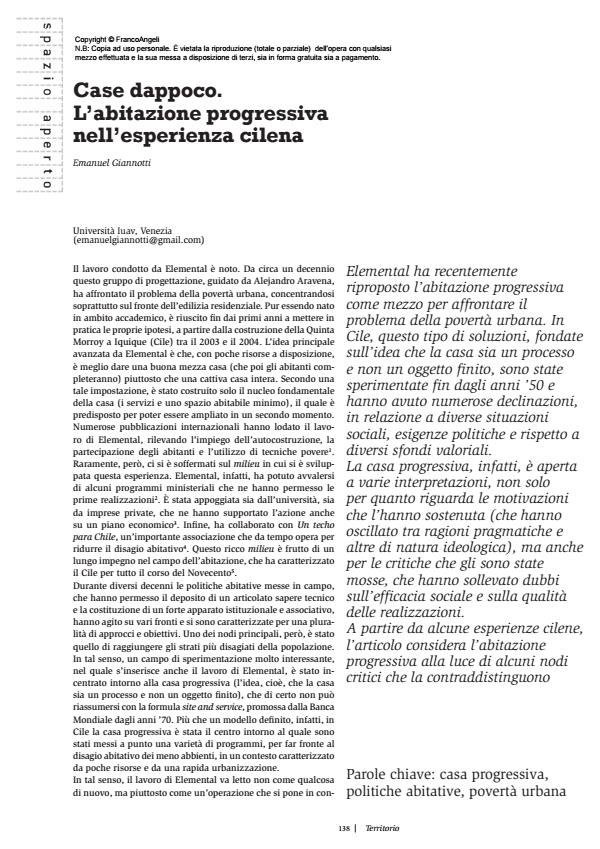Case dappoco. L’abitazione progressiva nell’esperienza cilena
Titolo Rivista TERRITORIO
Autori/Curatori Emanuel Giannotti
Anno di pubblicazione 2012 Fascicolo 2012/60
Lingua Italiano Numero pagine 11 P. 138-148 Dimensione file 1200 KB
DOI 10.3280/TR2012-060024
Il DOI è il codice a barre della proprietà intellettuale: per saperne di più
clicca qui
Qui sotto puoi vedere in anteprima la prima pagina di questo articolo.
Se questo articolo ti interessa, lo puoi acquistare (e scaricare in formato pdf) seguendo le facili indicazioni per acquistare il download credit. Acquista Download Credits per scaricare questo Articolo in formato PDF

FrancoAngeli è membro della Publishers International Linking Association, Inc (PILA)associazione indipendente e non profit per facilitare (attraverso i servizi tecnologici implementati da CrossRef.org) l’accesso degli studiosi ai contenuti digitali nelle pubblicazioni professionali e scientifiche
Elemental has recently reproposed the progressive dwelling as a means of addressing the problem of urban poverty. In Chile, this type of answer, based on the idea that a house is a process and not a fi nished object, has been experimented with since the 1950s and it has been implemented in numerous versions in relation to different social conditions, political demands and with respect to different background values. The progressive home is in fact open to various interpretations, not just with regard to the motivations which have supported it (which have ranged from pragmatic reasons to those of an ideological nature), but also because of the criticisms of it that have been made, which has raised doubts over its social effectiveness and the quality of the results. On the basis of various Chilean experiences, the paper considers the progressive dwelling in the light of certain critical issues that distinguish it.
Parole chiave:Progressive home; housing policies; urban poverty
Emanuel Giannotti, Case dappoco. L’abitazione progressiva nell’esperienza cilena in "TERRITORIO" 60/2012, pp 138-148, DOI: 10.3280/TR2012-060024